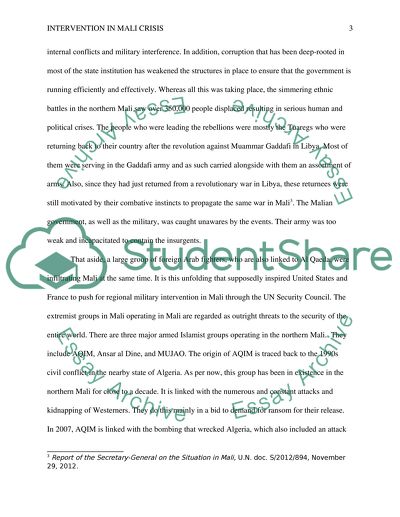Cite this document
(“Sources of Mali Crisis and Causes of Military Intervention Research Paper”, n.d.)
Sources of Mali Crisis and Causes of Military Intervention Research Paper. Retrieved from https://studentshare.org/history/1471840-sources-of-mali-crisis-and-causes-of-military-intervention
Sources of Mali Crisis and Causes of Military Intervention Research Paper. Retrieved from https://studentshare.org/history/1471840-sources-of-mali-crisis-and-causes-of-military-intervention
(Sources of Mali Crisis and Causes of Military Intervention Research Paper)
Sources of Mali Crisis and Causes of Military Intervention Research Paper. https://studentshare.org/history/1471840-sources-of-mali-crisis-and-causes-of-military-intervention.
Sources of Mali Crisis and Causes of Military Intervention Research Paper. https://studentshare.org/history/1471840-sources-of-mali-crisis-and-causes-of-military-intervention.
“Sources of Mali Crisis and Causes of Military Intervention Research Paper”, n.d. https://studentshare.org/history/1471840-sources-of-mali-crisis-and-causes-of-military-intervention.


